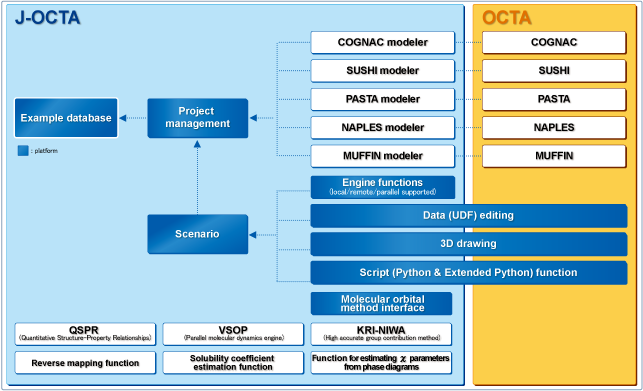制造商:
Main functions of J-OCTA
Molecular dynamics simulation (COGNAC, VSOP)
Interface, phase separation simulation (SUSHI, COGNAC-DPD)
Rheology simulation (PASTA, NAPLES)
Multi-phase material simulation (MUFFIN)
Quantitative Structure-Property Relationships (QSPR)
Zooming function, reverse mapping function
Example database
Structure of J-OCTA
J-OCTA platform
Molecular orbital method interface
Analysis example database
COGNAC modeler (Coarse-grained molecular dynamics
modeler)Including DPD (Dissipative Particle Dynamics) modeler
PASTA modeler (Rheology modeler)
NAPLES modeler (Rheology modeler)
SUSHI modeler (Dynamical mean-field modeler)
MUFFIN modeler (Multi-phase material modeler)
VSOP (Fast molecular dynamics engine)
QSPR (Quantitative Structure-Property Relationships)
Reverse mapping function
Solubility coefficient estimation function
Function for estimating χ parameters from phase diagrams
KRI-NIWA(High accurate group contribution method)

Limitation of J-OCTA Student Edition
J-OCTA Student Edition is available for following:
- Full atoms / coarse-grained (Bead-Spring) modeling and analysis of results for the MD simulation (using OCTA-COGNAC and LAMMPS).
- Prediction of phase separated and interfacial structure, using mean field (SCF) Theory (OCTA-SUSHI) and Dissipative Particle Dynamics (OCTA-COGNAC and LAMMPS).
- Classical MD simulation can use result of other theories such as SCFT.
- COGNAC and LAMMPS supports MD calculation.














